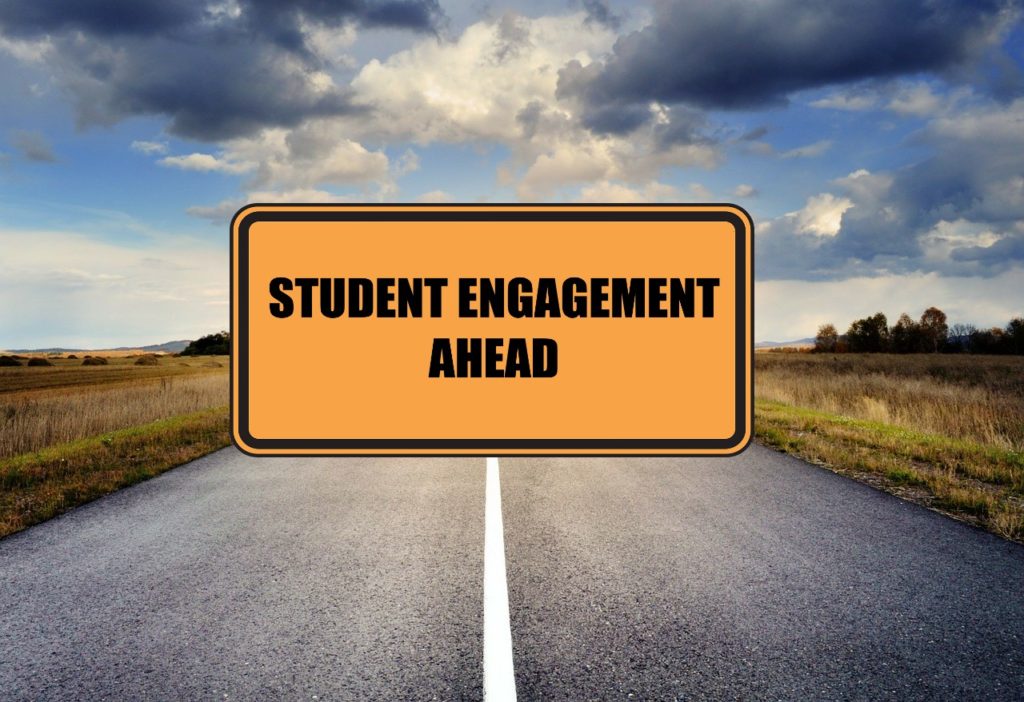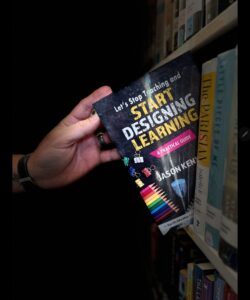We all want it. Leaders and teachers chase it daily in every classroom. But, the secret is that it is hiding in plain sight. Always has been. If that is the case, what does it take to bring out that student engagement we are all constantly looking for? It takes designing for learning.
You are probably thinking, “It is NOT that simple.” It can be, if we choose to incorporate the right elements and construct high-quality, impact-filled and intentional learning for our students. It does not take the latest edtech tool, innovative lesson, inspiring content or teachers standing on their heads for attention (although each one of those does have their place in learning). The following is a brief sampling of improvements we can make to our teaching to design learning that will result in student engagement.
Begin at the Beginning
Research tells us that the time our students are most excited, motivated and ready to learn is in the opening minutes of class? Students enter class with all that energy and curiosity, and what happens in some classes? The “bellringer” today is to complete these 10 math problems, to correct these grammatical errors in these 5 sentences, write today’s journal entry just like you did yesterday, or anything else that seems like “drill the skill.” Even worse, we just might jump right into instruction without hesitation as soon as all students have made it to their desks.
Engagement can be fostered right away by using this high-value time to connect students to the learning that will be happening soon in today’s lesson. There are endless ways to have students access and activate their prior knowledge. Find ways to allow students to explore what they know already about today’s learning and make it as collaborative as possible. This way students are thinking, sharing, interacting about today’s learning together, getting excited. However you choose to do that is up to you. The other aspect about these opening minutes we must consider when designing this learning to engage is fostering curiosity as well. These opening minutes do not have to be a long, drawn out, elaborative show, but what we do ask of students needs to peak their interest and curiosity in what’s going to be learned today. Remember, these opening minutes should be about prior knowledge and interest, lasting 10% of your time at most. Make these count to get students engaged!
Maneuvering the Middle
So the opening minutes are over, now what? How do we design learning to try to maintain engagement and maximize learning during our instruction and work time? To keep this simple for now, let’s answer 2 questions about today’s learning: 1. What will I ask the students to do today that “shows” both them and me that the learning took place? 2. How will students navigate through their learning today? Let’s take a closer look at these.
What are we asking them to do? (aka The Task). Look at what the lesson is providing students to complete to show learning. Is it a worksheet? Is it “read and answer the questions”? Is it only requiring transfer of information from one source to another source? Is it requiring them to problem solve? Critically think? Collaborate? Research? Look carefully at what you’re asking students to do, it may be why they are disengaging in the first place.
What are some things to consider then? First, rigor. Is the task complex enough to be challenging, but not so complex that they shut down? Next, relevance. Does what they’re asked to do have any transfer into the real world? Can they see themselves using it outside of this classroom ever again? And lastly, relation. This is the one that’s most neglected. Are the students able to see themselves, their values, their cultures, and more in what they are doing in class for learning?
We have to choose what we give our students to complete for us carefully. You have the power to assign an engagement “thriller” or an engagement “killer.” It’s in our hands.
Relating to the Task we are asking students to produce is how will they interact with this learning today? No, I am not advocating the ending of direct instruction. But just like every other instructional strategy, it has to be chosen for a purpose with engagement in mind. So, what do we need to consider when reflecting on how students will interact with their learning?
We love talking and getting ideas from others, so why not allow students to do the same? Collaboration is always an effective mode to build into our learning for students. Success Criteria is one many are missing out on. Please go check out my older post on the subject and you can see. By telling our students up front what it will take for mastery of learning at every level, we turn that responsibility over to them. It is their learning after all. We should supervise and facilitate them monitoring and assessing themselves to move upward and deeper in their own learning. Along with this, we have to design tools for students to use to escape misunderstandings and misconceptions. We can allow these tools to be accessed openly anytime, so that we are free to facilitate, small group remediate, or intensely accelerate anyone else in the room who may need it. When we find ways to turn the responsibility of learning back over to the students, they will take on the challenge, if we build in the supports, safeguards and successes along the way that keep motivation and engagement at the forefront.
The last word: Edtech
I know we are all grasping at anything we can to get students more involved in learning. There are literally thousands of ideas being presented every day all over the internet. Hundreds of edtech companies out there with endless solutions. Edtech is great. We can now connect and do more things than I ever could imagine, but I will say this. Edtech is a tool to be chosen to accomplish a goal. The goal is ALWAYS centered in learning. Choose the tool to accomplish the goal you have designed for the learning. Go check out www.boldschool.com and you can see what I mean. Edtech is tempting, but don’t let the idea of engagement overtake the purpose of the learning in the first place.
This also goes for anything else we do in the classroom. Most of our engagement opportunities can be addressed through intentional, instructional design. Do not chase engagement for engagement’s sake. Remember the Field of Dreams line, “If you build it, they will come?” The same is true for student engagement. If we design it, they will engage. And in the end, what will happen is what the goal has been all along: they will learn!
As always, if you are curious or what more information, please reach out at www.letsquitteaching.com and follow me on Twitter @letsquitteachin


